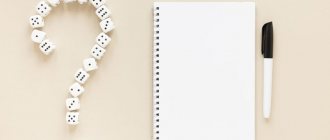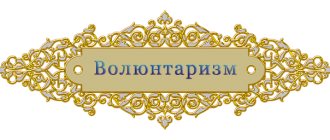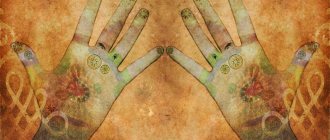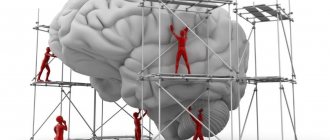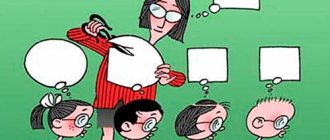A person can control everything: he can create the world with his own hands, making it amazing and beautiful, invent unthinkable things that change the consciousness of an entire generation and humanity. One only has to compare the level of medicine today and that of the last century. What about centuries! Even ten years ago this area left much to be desired.
But, as practice shows, not everything ingenious is the complex work of scientists. Each of us has a certain “magical” force - the subconscious. It can work wonders, literally pulling a person out of the other world with the help of an ordinary... pacifier (placebo) - a drug that has no medicinal properties. It is used instead of medicine to improve the patient's well-being. Have you heard anything about the placebo effect?
In this article we will figure out what the placebo effect is, talk about the pros and cons of this phenomenon, but first, let's dive into history.
Where did it all start?
This happened during World War II. In military hospitals there was an acute shortage of the painkiller - morphine, but the conditions did not allow stopping heavy operations, and then Henry Beecher decided to take a risky step: he had to operate on a seriously ill soldier, the lack of the drug threatened the onset of painful shock, and to prevent this from happening, he injected the wounded saline solution to the soldier, saying that it was morphine.
Beecher performed the operation as usual: removed the fragments and treated the wounds. Meanwhile, the wounded soldier acted as if he had actually received a dose of painkillers and felt only minor pain. After this incident, the surgeon continued his practice of replacing morphine with saline, and upon returning to the United States he began to study this phenomenon in more detail.
In 1955, Henry Beecher conducted a series of studies that proved the fact that a person is able to change physical reality with the power of thought. For the purity of the experiment, he compared the condition of not only patients who received pacifiers, but also those who were treated with medications. As a result, it turned out that the subjects who took the placebo felt much better than the other half of the patients studied.
Of course, this World War II story is not the first to point to the existence of the placebo effect. The Bible mentions miraculous healings; in particular, it talks about cases when the image of the Virgin Mary appeared to the sick, and they immediately recovered from all their ailments. Even in our time, after visiting holy places, people claim that their lives have changed for the better and they said goodbye to their illnesses.
Faith healing is not just about Christianity. The Indian guru Sathya Sai Baba, who is considered an incarnation of the deity, was known for healing the sick with his palms, which he first dipped into sacred ash. This healing method was practiced by the kings of England and France who reigned between the 4th and 9th centuries.
There are many similar stories in world practice that prove the incredible power of the subconscious. In the 1770s, Franz Anton Mesmer, a Viennese physician, based on Newton's teachings on the effects of earth's gravity on humans, concluded that there is a fluid in the body that can be controlled. He called it “animal magnetism” [D. Dispenza, 2016].
The essence of Mesmer's technique was as follows: he asked patients to look intently into his eyes, while he himself moved magnets around the body. This is how he brought the magnetic fluid into balance (then he did the same thing, only without magnets). During the entire process, patients began to twitch, some went into convulsions, it was believed that this condition indicated recovery.
Mesmer's follower was Armand-Marie-Jacques de Chastenet, an aristocrat from France. It caused “magnetic somnambulism” in people, a condition similar to sleepwalking. In this state, patients were immersed in deep thoughts and insights about their health, and when they emerged from it, they did not remember anything about what happened to them.
Later, James Braid, a Scottish surgeon, began to develop the topic of hypnotism and practice hypnosis treatment on his patients: he asked them to focus on a specific idea while looking at an object, while he himself manipulated their subconscious. He described his experiments in the book “Neurypnology”.
French neurologist Jean-Martin Charcot believed that people suffering from hysteria are susceptible to hypnosis. He used it not for treatment, but to study the symptoms of the disease. But there were those who supported James Braid's approach: Dr. Hippolyte Bernheim suggested to his patients during their trance that after the end of the hypnotic session they would feel better and all signs of illness would disappear.
Each of those who studied the influence of the subconscious on a person’s health used their own healing methods, and in fact, they were all able to help many patients, changing their ideas about the disease.
The technique of hypnotic suggestibility was used during the First and Second World Wars to treat soldiers for psychological trauma. Such techniques for working with the subconscious were so successful that doctors began to widely use them in practice. We are talking not only about hypnosis, but also about simple sugar pills that were given to patients as miracle cures [M. Shoifet, 2006].
In the late 1970s, it was proven that placebos trigger the production of endorphins - hormones of joy and pleasure that act no worse than drugs. John Levine, MD, gave pacifiers instead of pain medication to 40 dental patients after wisdom tooth removal. Patients felt significant relief, and when they were then given an antidote to morphine, they began to experience pain. It turns out that the placebo causes relief not only in the head, but also in the body, which indicates the production of endorphins.
An interesting study was conducted by Robert Ader, PhD, which helped him prove that the placebo effect is directly related to the development of a conditioned reflex. This reflex, which implies a connection between conditioned circumstances and natural functions, was discovered by Ivan Pavlov, a Russian physiologist. He proved it using the example of dogs: every time before feeding them, the scientist rang a bell. Later, when the dogs heard the bell ringing, they produced saliva. It turns out that the acquired reflex triggers the work of the subconscious [X. Koshtoyants, 1936].
Ader conducted his experiment on rats: he gave them sweet water, which contained cyclophosphamide, which causes abdominal pain. As a result, the rats not only suffered from pain, but also died from various infections, because this substance suppressed the immune system.
Animals began to avoid contact with sweet water, even water that did not contain this substance. But at the same time, when the scientist forcefully gave them ordinary sweet water, they also got sick and died: the water transmitted a signal to the nervous system to suppress the immune system. This experiment clearly showed that the placebo effect can lead not only to a positive, but also to a negative outcome [D. Dispenza, 2016].
History of the discovery of placebo
This term was discovered at the beginning of the 18th century. But interest in this phenomenon was truly shown during the Second World War, when an American anesthesiologist saw that ordinary saline solution (roughly speaking, water with salt) acts as an anesthetic and subsequently conducted empirical research and even wrote works about it - “Potent placebo.”
Tell me, have you ever turned to traditional healers? Or have you ever wondered how homeopathy and other alternative medicine works, which promises miracle healing in one session? It's still the same effect! This is an amazing ability given to a person for self-healing. I would call this our super power. Thought is material and capable of miracles!
One of the most obvious examples of this effect has been familiar to us since childhood. Although the example is from a fairy tale, it illustrates life very well. Have you read The Wizard of Oz? So there Goodwin gave the Scarecrow straw stuffed with needles, and the scarecrow immediately felt intelligent. The Tin Woodman was able to love with the help of a piece of silk. And Leo became fearless, thanks to the smelling liquid. Classic placebo effect!
So how does it work?
Before understanding how placebos work, let's go over the basic concepts again. Placebo is a substance that does not have obvious medicinal properties, which is used as an imitation of a medicinal drug in order to cure any ailment. These can be tablets, powders, liquid substances, injections. Translated from Latin, placebo means “I will like you.”
The placebo effect is the improvement of a patient’s condition with the help of a placebo, or more precisely, thanks to the patient’s belief that this substance, which is actually a dummy, will cure him.
Despite the fact that the placebo effect has been the subject of scientific research many times, it is impossible to say with certainty what the reasons for its influence on humans are.
There are several mechanisms that trigger the healing process after taking a placebo:
- Waiting for the patient. A person receives a “magic pill”, which, as the doctor assured, should cure him of his ailments. As a result, the patient enters a state of anticipation of the required effect, the level of stress hormones decreases, and the symptoms begin to seem less acute than they were before taking the medicine.
- The relationship between the placebo effect and the brain. Imaging of the human brain has shown that the placebo effect affects the nervous system, resulting in placebo analgesia (decreased pain sensitivity). This process involves parts of the spinal cord and brain stem, the nucleus accumbens and the amygdala. It has also been found that dopamine and opioid receptors increase activity in people while taking a placebo. These substances help reduce pain. Such changes occur in those areas of the brain that are affected by antidepressants [Med Special, 2019].
- Psychoneuroimmunology. This new direction of science explains the influence of brain activity on immunity. This is exactly what we talked about earlier when we described the experiment with mice and sweet water. In simple words, a person’s positive attitude can cure him of an illness.
- Development of mechanisms regulating health status. For example, a fever promotes the death of bacteria and viruses by increasing core temperature. It is no coincidence that doctors do not recommend reducing fever with medications if it is below 38 degrees. But at the same time, the brain itself “decides” when it will respond to the disease: for example, in the late stages of pregnancy with insufficient nutrition, fever does not occur, because high temperature can negatively affect the child.
This is what happens with the placebo effect: the brain “understands” that it does not need to respond to pain or other negative symptoms [Med Special, 2019].
As you can see, the placebo effect is explained from the point of view of psychology and medicine, but the attitude towards it in these areas of application is different, and the advisability of using the placebo effect still causes a lot of controversy. Let's figure out what's what.
Instead of output
A placebo is a first aid kit that is always with us and freely available. It doesn't always work yet, but scientists have not yet fully studied this phenomenon.
Who knows, perhaps in the future scientists will be able to understand the mechanism of how placebos work and create effective drugs that will work using the internal potential of the body.
Here's the test. Don't be lazy and test your knowledge. Good luck! PPS If the test is not displayed, wait a moment, it is loading.
Was there anything you didn’t like about this article, do you have anything to add, or did you find an error? Be sure to write about it in the comments. Not a single comment will be left unattended!
Placebo effect in psychology
The placebo effect is the result of an influence on our subconscious. The severity of the effect depends on how suggestible a person is. Placebo works great on extroverts and children; people with low self-esteem and neurotic types are even more affected by the placebo effect.
Placebos are successfully used in the treatment of psychosomatic disorders, because when the disease arises in the patient’s “head”, it is logical to involve psychology, and not real drugs. The main thing is to suggest that the pacifier is a miracle cure, otherwise such therapy will have the opposite effect due to the patient’s strong self-hypnosis (he may decide that the “medicine” will harm him).
As practice shows, insomnia, anxiety, and depression are well treated with pacifiers.
If we are talking about the treatment of psychological trauma, then the use of placebo does not always give positive results, especially if the patient is an introvert. The same story occurs in the treatment of personality disorder: as a rule, distrustful people with whom it is difficult to establish emotional contact are susceptible to this mental illness [G. Kibardin, 2018].
The main mechanism of placebo is to subjugate people's subconscious. This technique is used in various methods of alternative medicine (spells, removing the evil eye, damage, etc.) The effect of such “treatment” depends on the degree of suggestibility of a person and, as a rule, those who are in deep despair turn to such “healers” or during a period of psychological distress. You can suggest anything to a person when he is in an unstable mental state, and charlatans actively take advantage of this.
In fact, meditation and visualization also work on the placebo principle, and are perhaps one of the safest ways to work with the subconscious, if, of course, you know how to use these methods correctly.
In any case, it is important to understand that the placebo effect will only give a positive result when a person’s belief in recovery is especially strong. Once he is disappointed in the miraculousness of the drug, the body can trigger the reverse mechanism of action - nocebo.
Another interesting fact: our daily mentality determines our future. Scientists observed people over 50 years of age for more than 20 years and came to the conclusion that those who had a positive attitude towards approaching old age lived 7 years longer than those who had a negative attitude [Ya. S. Hamilton, 2010].
It has been proven that optimists cope with business and difficult situations more easily, get sick less, experience pain less often and recover faster, because emotions directly affect the functionality of a person’s internal organs.
Who is more susceptible to the effect of self-hypnosis?
There are several categories of people who are especially susceptible to the influence of placebo and, accordingly, self-hypnosis:
- insecure individuals, characterized by clearly low self-esteem and low expectations;
- weak-willed people without unshakable convictions;
- neurotics;
- people who have fallen into extreme despair;
- patients with fragile or weak mental health (children, elderly people).
Some patients are so suggestible that after reading about the possibility of side effects from the drug (placebo), they actually begin to notice them.
The placebo effect in medicine
According to research, in the United States, placebos are very often used to alleviate the condition of patients. In Germany in 2012, approximately 88% of doctors prescribed a placebo to their patients at least once, and in the UK, 97% of doctors used this approach to treatment in 2013. There is no exact data on how things are in Russia, but there is reason to believe that such a practice exists, because we have a “Hit List of Drugs” - a list of drugs whose effectiveness has not been proven [J. Howick, 2013].
The placebo effect is used in medicine to relieve a patient's pain when there are no effective drugs available for a specific case. It is also used when there is no confidence that a real medicine will help cope with the disease. It happens that a doctor prescribes an “empty” drug out of ignorance: he is confident in its effectiveness, although from a medical point of view the substance is completely useless.
But there are cases when a placebo is the only way to avoid conflict: the patient is sure that he needs medicine, although there is no direct indication. In this case, the doctor prescribes neutral substances to calm the person.
Doctors have repeatedly tried to use placebos in surgery, cardiology and other branches of medicine, and practice shows that pacifiers are good at relieving symptoms: nausea, headaches, etc. Studies have shown positive dynamics of recovery for people suffering from Parkinson's disease. It turns out that a placebo can also affect a person’s motor functions, including [A. Quattrone, G. Barbagallo, A. Cerasa, A. J. Stoessi, 2018].
A serious disadvantage of placebos is the unpredictability of the outcome of its use. Side effects depend on the patient's mood. There have been many recorded cases where neutral drugs, on the contrary, worsened a person’s condition, for example, causing toxicosis.
In some countries, it is prohibited to use placebos for medical purposes, because... All treatment is based on compliance with the principle of voluntary informed consent. If a doctor prescribes a pacifier to a patient, it means he deliberately cheated.
Plus, modern studies have shown that a person’s natural recovery and possible errors in the patient’s test results are often mistaken for the placebo effect [RAN, 2017].
The use of placebos in medicine is considered a gross violation if there is an effective drug, the benefits of which have been scientifically proven and it is known for sure that the placebo will not bring the desired effect.
It turns out that, despite the seemingly clear evidence of the benefits of the placebo effect, its use in medicine is a last resort when there are no other treatment options left.
Tricks of invention
The placebo effect has a long and rich history. It played a big role in the medicine of past centuries, when patients had to be treated with herbs and useless drugs.
The first scientific demonstration of the placebo effect occurred in 1799, when the British physician John Haygarth decided to test one of the “healing” drugs that were sold in shops at the time: expensive metal rods called “Perkins tractors” that supposedly drew diseases out of the body and helped to cope. with rheumatism thanks to a special alloy. Haygarth replaced the “healing” metal rods with wooden ones and, under the guise of “Perkins tractors,” offered them to subjects. Four out of five patients with rheumatic fever reported that their pain had improved.
We are happy to be deceived
Caricature of Elisha Perkins trying to cure a patient with his metal "tractors", 1754
Photo: Getty Images/Photo 12
The term itself first appeared in 1920 in an article in The Lancet. The placebo effect came into clinical practice after American anesthesiologist Henry C. Beecher noticed during World War II that some wounded people mistook regular saline as a painkiller.
Farm factor: the EAEU may have its own medical agency
A single regulator, an analogue of the European EMA, will speed up the registration of drugs in the member countries of the union
At Dr. Beecher's insistence, placebos became the basis for double-blind drug trials, in which one group of people was given the real drug and the other a sham drug. A drug was considered effective only if it was statistically superior to placebo.
Amazing Facts About the Placebo Effect
The very existence of the placebo effect is an amazing fact that not everyone can still wrap their head around. Many people understand this phenomenon as an opportunity to heal with the power of thought, but there are several more interesting nuances that are striking:
- The placebo effect works in animals: we have already given examples of studies that prove this. Here's another one: 34 dogs received medications for epilepsy, or rather, half were real medications, and half were dummies. Ultimately, 79% of dogs treated with placebo experienced a reduction in the number of seizures [K. Muñana, D. Zhang, E Patterson, 2010].
- Alcohol intoxication can occur from self-hypnosis: it turns out that you don’t have to drink alcohol to get drunk. It is enough to simply believe that the glass contains a strong drink and not lemonade, and your body will trigger the corresponding reaction, as in the placebo effect. This fact was proven by a simple experiment: a group of people were given tonic and lime under the guise of vodka, and a little later they were asked to take an IQ test. The test result showed that the mental abilities of the subjects decreased, because... they believed they were intoxicated [D. Decher, 2013].
- Most antidepressants act like placebos: these medications are now often prescribed by doctors to combat stress, nervous disorders and depression, but independent studies have proven that some of them do not provide any drug benefit, but cause a placebo effect [Boseley, 2008].
- Even if the patient finds out that he is taking a placebo, the result of the “treatment” will not change: it is generally accepted that a placebo is effective when a person thinks that it is a very effective medicine. But it has been proven that even if the patient finds out about the dummy, the positive dynamics of the “treatment” may not change for the worse [Jha, 2010].
- The results of patients taking placebos differ depending on their cultural background: in America, people believe in the healing power of pills because... There is a powerful propaganda of medicines there. Placebo trials for the treatment of stomach ulcers showed good results in Germany, but in Brazil this approach in medicine did not produce the expected effect. It turns out that the patient’s cultural background, his faith, fears and beliefs have a strong impact on his subconscious.
- Two different infections can trigger the placebo effect: scientists divided a group of asthma patients into two parts. They infected one half of the subjects with parasites, and convinced the rest that they were also infected with them, assuring them of the effectiveness of this approach in treating asthma. As a result, both groups of subjects improved their health, and many patients refused to be treated for parasites after the experiment, because believed that they helped them fight asthma. This fact explains why we are willing to do reckless things for the sake of our health.
- A placebo can have a negative effect: there is another side to the coin. If the patient expects side effects or worsening of the condition from the pacifier, such an attitude will lead to negative consequences. In 1962, an experiment was conducted in Japan: children rubbed poison ivy leaves on their hand and were told that it was a harmless plant, and rubbed their other hand with sakura leaves and claimed that it was poison ivy. As a result, children developed a rash on the hand that was rubbed with sakura. This is how a pre-established negative attitude influences the situation.
- Color affects the subconscious: scientists have proven that the result of using a placebo depends on the color of the “magic” pill. Yellow pills have a positive effect in the treatment of depression, red pills increase tone, and green pills relieve symptoms of stomach ulcers.
- Imitation of surgical interventions also gives a placebo effect: if a person who is indicated for an operation is told that it was performed, the body will begin to recover due to self-hypnosis. This fact has also been proven by scientific experiment [D. Decher, 2013].
Can you imagine the power our subconscious has?! But, as you see, a person’s faith, beliefs or fear can either cure him or destroy him. It all depends on what he is in the mood for and how much he can control his thoughts. From placebo to nocebo – one step.
The Placebo Effect: Real Life Examples
Janice Schoenfeld, a 46-year-old designer from California, suffered from depression since childhood, but she did not try to get rid of her illness until she saw an advertisement that the Neuropsychiatric Institute of the University of California at Los Angeles was planning to test a new drug for depression and was looking for it. volunteers. Janice decided that this was her chance to recover and took part in the experiment.
She was handed a bottle of pills, and at the same time she was aware that some of the subjects would receive the real medicine, and some would receive a placebo. Soon after taking the pills, Janice began to feel better than ever, and there were even side effects from taking the medicine (nausea), so she was sure that she was taking real drugs. Imagine Janice’s surprise when the doctor said that she had been taking a placebo all this time.
In 1957, Bruno Klopfer, a psychologist at the same institute where Janice's experiment took place, published an article about his patient Mr. Wright. He had cancer of the lymph glands: huge tumors that did not respond to standard treatments.
The patient himself believed in a cure, unlike his attending physician. Wright learned that tests were being conducted on the experimental drug krebiozen, he voluntarily became a study subject, although according to the rules he had no right to do so, because. his condition was very bad.
After receiving the injection, within a couple of days he began to feel much better, and the doctor noted that his tumors began to shrink. After some time, he was discharged from the hospital, because... he was completely healthy.
Soon the newspapers published an article that Krebiozen was a fake. Wright read it and went back to the hospital: the tumors had returned. The doctor realized that the personal result was achieved thanks to the placebo effect and, realizing that this was the only chance to get him back on his feet, he told the patient that real Krebiozen would soon be admitted to the hospital. This news has already had a positive effect on Wright's condition.
A few days later he received his injection again, but it was simple distilled water (which, of course, he did not know about). The tumors disappeared, the patient went home, but a repeated article about the ineffectiveness of Krebiozen killed him. After reading it, Wright no longer believed in his healing, and literally three days later he died.
In the late 1950s, researchers from Kansas City and Seattle conducted the following experiment: they divided heart patients into two groups. The first group underwent heart surgery, and the other group simulated such an operation: surgeons made small incisions in their chests, which they simply stitched up without performing any other surgical interventions.
The results were astounding: 67% of patients who underwent real surgery began to feel less pain, and among the other half of the subjects, 83% of the patients did. It turns out that faith in healing turned out to be stronger than real operations [D. Dispenza, 2016].
How Placebos First Appeared in the Bible, and Only Later in Medical Books
It is believed that the first mention of placebo in literature can be found in the Bible. In Psalm 114 there is a line in Latin: “placebo Domino in regione vivorum.” In modern Russian translation it sounds like this: “I will serve You, Lord, in the land of the living.” But scientists have not explained the relationship between the placebo pacifier and placebo as a praise to heaven, so we will continue to search for the source of the magical effect.
Let's move to the Middle Ages and read The Canterbury Tales by Geoffrey Chaucer, the founder of English poetry. In one part he describes the funeral and subsequent wake. This tradition has not changed much and looks the same now. People gather around the table, drink and eat, remembering the deceased. Chaucer calls those who come to eat and are not close to the deceased, “priests of the devil, chanting placebos.” That is, this is what he calls songs of sorrow from those who do not mourn, songs of deception.
Screenshot of the James Lind Library, a site with archival records and articles about medicine. On the screen is the cover of the book by Dr. William Smelley
In 1752, it was proposed to use a placebo for treatment - the first to do this was Dr. William Smellie. He was an obstetrician and thought that it would be possible to give patients something harmless during contractions that could distract them for a while. And in 1763, the word placebo became part of the medical vocabulary. A certain Dr. Pierce once observed this effect and described it.
It happened like this: he went to visit a friend who was unwell, and found another doctor, Doctor Placebo, at the bedside. He was very attractive: “the patient’s doctor was dressed fashionably, and his hair was curly and very long.” The patient was delighted and noted that she felt good thanks to the doctor’s wonderful drops. Dr. Pierce noted skeptically that the recovery was brought about not so much by the drops as by Dr. Placebo and his courtesy. Doctors began to realize that they could convince a person and influence their well-being by imitating the medicine.
Summarize
The human subconscious is an amazing thing, it can heal him, you just need to use the trigger mechanism - a placebo. Many people say that faith is the best medicine. It is not for nothing that many religious scriptures contain examples of miraculous recovery.
In fact, a positive attitude and confidence that the treatment will have a positive effect play a huge role. Negative thoughts trigger irreversible processes in the body that destroy it from the inside, and even the most advanced medications will not help here, not to mention placebos.
If you still don’t believe in the power of thought and the subconscious, or simply haven’t wondered what the human brain is capable of, we recommend taking our online Cognitive Science program, where in a few weeks you will learn how to apply more than 20 thinking techniques that will change the way you think about your own abilities.
The topic of the placebo effect was perfectly covered by Joe Dispenza in his book “Be Your Own Placebo: How to Harness the Power of the Subconscious Mind for Health and Prosperity.” In it you will find several more real stories, descriptions of experiments and a detailed scientific explanation of why pacifiers heal, but, on the contrary, can kill someone. The future is in the hands of those who are optimistic, confident, believe in the best and do not give free rein to negative thoughts. Draw conclusions, or better yet, smile right now - heal your body with a positive attitude. Be healthy!
We also invite you to take a short survey:
We also recommend reading:
- Storytelling
- The power of thought: scientific facts and research
- Sleeper effect
- What is consciousness?
- 7 popular pseudosciences
- Aromatherapy: your tone, health, peace of mind
- The Rosenthal effect or how to wisely lead a team
- Seven Visualization Techniques
- Psychoimmunology – strengthening the immune system through mental health!
- Anniversary syndrome: what is it and how to avoid it
- Rosenhan's experiment. One step from health to madness
Key words:1Cognitive science
